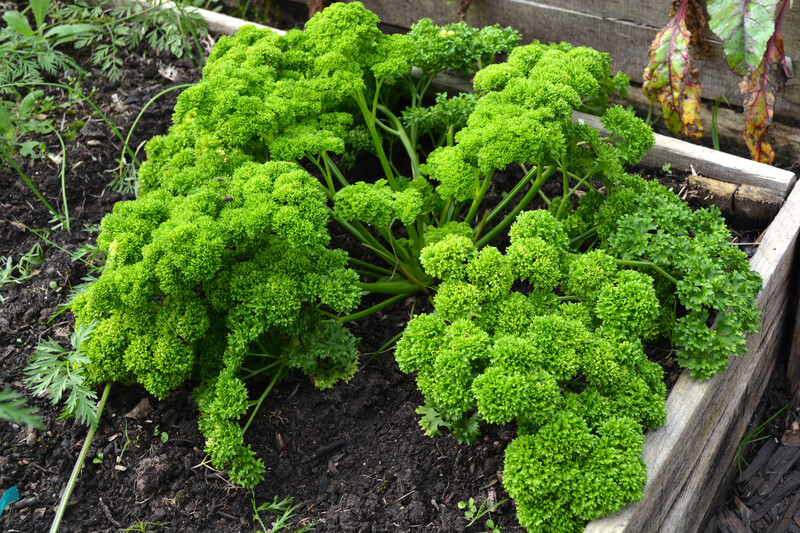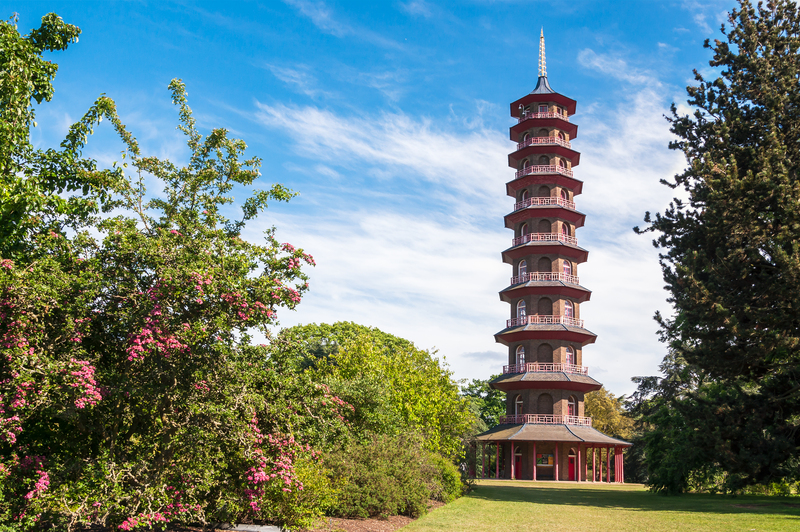Achieve a Weed-Free Garden with These 3 Proven Tips
If you've ever spent a Saturday afternoon bending over garden beds yanking out persistent, unwanted plants, you know how frustrating controlling weeds can be. Weeds not only make gardens look unkempt, but they also compete with your prized plants for nutrients, water, and sunlight. Achieving a tidy, weed-free garden might seem impossible, but with the right methods, you can minimize weed growth and maintain a healthy, beautiful landscape. In this article, we'll explore three proven strategies to help you control weeds effectively and nurture your dream garden.

Why is a Weed-Free Garden Important?
Maintaining a weed-free garden is more than a matter of aesthetics. Weeds are resilient, opportunistic, and can quickly outcompete your vegetables, herbs, flowers, or shrubs. Here's why keeping weeds at bay is crucial:
- Nutrient Theft: Weeds steal essential nutrients and water from your desired plants, stunting their growth and reducing yield.
- Disease Risk: Many weeds harbor pests and diseases that can spread to healthy plants.
- Increased Labor: Letting weeds take over creates more work and makes future weed control much harder.
- Curb Appeal: A weed-free flowerbed enhances the beauty and value of your home.
Ready to take control? Keep reading to discover three time-tested tips for a weed-free lawn and garden.
1. Prevent Weeds with Mulching
The Power of Mulch for a Weed-Free Garden
Mulching is one of the best weed prevention methods. An effective layer of mulch acts as a physical barrier, blocking sunlight and suppressing weed germination. But mulch does more than just fight weeds; it also helps the soil retain moisture, moderates soil temperature, and adds organic matter.
- Organic Mulches: Wood chips, straw, shredded leaves, pine needles, and grass clippings are popular choices that enrich the soil as they decompose.
- Inorganic Mulches: Landscape fabric, gravel, or black plastic create a weed-resistant barrier, especially in non-planting zones.
How to Mulch Correctly for Weed Control
To get the most out of this method, proper mulching is crucial:
- Start with a weed-free bed. Remove all existing weeds before adding mulch - otherwise, they'll find a way through.
- Layer it right. Apply 2-4 inches of mulch to smother weed seeds. Thinner layers only encourage tough weeds to push through.
- Leave breathing space. Keep mulch a few inches away from stems or trunks to avoid rot and pest issues.
Bonus Tip: Cardboard or newspaper placed beneath your mulch enhances weed suppression by preventing light from reaching weed seeds.
2. Cultivate Properly and Regularly
Why Cultivation is Key to a Weed-Free Yard
Regular soil cultivation -- also known as hoeing or light tilling -- disrupts weed growth, especially before weeds take root. This proactive approach makes it difficult for weeds to establish themselves and reproduce.
- Use the Right Tools: A sharp hoe, hand weeder, or stirrup hoe makes quick work of young weeds.
- Cultivate Shallowly: Shallow cultivation avoids bringing buried weed seeds to the surface where they might sprout.
- Work after Rain: Moist soil is easier to work with, but don't disturb saturated soil as it can harm soil structure.
Best Practices for a Weed-Free Vegetable Garden
Here's how to weave regular cultivation into your weekly gardening routine:
- Hoe or cultivate weekly -- especially during spring and early summer when weeds are most aggressive.
- Remove weeds before they flower. One blooming weed can launch hundreds of seeds into your beds!
- Target annual weeds early. Perennial weeds may require digging out roots to fully eradicate.
- Finish with mulch. After clearing, cover bare spots with your preferred mulch to prevent regrowth.
Consistent cultivation is one of the simplest and most effective secrets for weed-free flowers, herbs, and veggies.
3. Choose Smarter Planting Strategies
Plant Dense for Weed-Free Flowerbeds
One often overlooked strategy for a weed-free garden is strategic planting. By reducing exposed soil with closely planted crops or ground covers, you make it harder for weeds to get started.
- Use ground covers: Creeping thyme, sedum, vinca, and ajuga create a living mulch that smothers weeds.
- Space ornamentals and veggies properly: Follow slightly denser than normal spacing to shade out weed seedlings, while not crowding your plants.
- Utilize interplanting and companion planting: Mix upright and vining plants, or combine fast growers with slow growers, to maximize canopy coverage.
Leverage Cover Crops for Weed-Free Beds
For vegetable gardens, winter cover crops like rye, clover, and vetch help maintain fertility and also block weeds from taking over in the off-season.
- Sow cover crops after harvesting summer plants.
- Mow them down in spring before seeding your primary crops, leaving plant residue as mulch.
- This helps maintain a weed-free vegetable patch year-round.
Smart planting design isn't just about beauty - it's a functional way to keep your garden neat, productive, and dominated by the plants you actually want!
Common Weed-Free Gardening Myths Debunked
- Myth: Pulling weeds once is enough.
Reality: Most weeds need to be removed regularly, often before they set seed. Skipping just one week in the prime growing season can lead to a weed explosion. - Myth: All weeds are bad.
Reality: A few "weeds" can contribute to soil health or attract beneficial insects, but overwhelming growth is always detrimental. - Myth: Chemicals are required for a weed-free zone.
Reality: With organic weed control like mulching, proper planting, and regular cultivation, you can maintain a lush, healthy garden without resorting to harsh herbicides.
Additional Tips for a Weed-Free Lawn and Landscape
- Edge borders with sharp spades or durable barriers to prevent creeping grasses and weeds from invading beds.
- Mow lawns high; taller grass shades out weed seedlings.
- Hand-pull stubborn perennials like dandelions and bindweed, making sure to extract the entire root.
- Consider flame weeding or boiling water for weeds in driveways, sidewalks, or hardscapes.
- Inspect new plants and compost for weed seeds before introducing them to your garden.
Eco-Friendly and Organic Weed Control Solutions
If you prefer a chemical-free weed-free garden, there's good news: the methods we've described are all natural! Here are some additional organic weed prevention ideas:
- Vinegar sprays: Use household vinegar (as a spot treatment for young weeds only), but mind your desired plants.
- Boiling water: Quickly scalds annual weeds in cracks and patios.
- Corn gluten meal: Can be used as a pre-emergent treatment for lawns to prevent some weed seeds from sprouting.
- Landscape fabric: A physical barrier ideal under pathways or gravel beds, yet should be used carefully around garden plants to avoid root restriction.
Seasonal Weed Control: When to Be Most Vigilant
Different weeds appear throughout the year, but certain times are especially critical for maintaining a clean, weed-free garden:
- Spring: The prime growth period for cool season annuals and perennial weeds. Mulch and initial cultivation are vital now.
- Early Summer: Warm season weeds emerge. Cultivate and reapply mulch as needed.
- Fall: Clean up garden beds, remove any remaining weeds, and sow cover crops as a protective measure.
- Winter: Monitor for cold-hardy weeds in milder climates and get a head start on spring prep.
What About Landscape Fabric for a Weed-Free Garden?
Many gardeners consider landscape fabric for permanent weed control. Here's what you need to know:
- Advantages: Physical weed barrier; ideal for pathways, perennial beds, or under mulch in areas with persistent weed issues.
- Disadvantages: Can restrict water and air, create buildup of debris on top (where weeds will sprout), and may tangle with plant roots over time.
If you use landscape fabric, always cover it with mulch and avoid placing it right against plant stems or tree trunks.
Summary: Achieve a Weed-Free Garden with These Simple Steps
Let's recap the essential strategies for a consistently weed-free garden:
- Mulch generously to smother weed seeds and conserve soil moisture.
- Cultivate regularly to disrupt weed growth before it becomes a problem.
- Plant smartly by crowding out weeds with dense planting, cover crops, or ground covers.
Systems and consistency are the secrets to zero-waste gardening. No single trick provides permanent weed-free gardens, but by applying the above tips, you'll spend less time weeding and more time enjoying your thriving vegetable patch or flower borders.
Remember:
- Stay vigilant, especially in early spring.
- Remove weeds before they flower or set seed.
- Refresh mulch beds yearly for the best results.

Frequently Asked Questions About Weed-Free Gardens
How often should I mulch for a weed-free garden?
Typically, mulching once per year (preferably in spring) is sufficient, but you may need to top-up if you notice thin spots or as the mulch decomposes.
Can I achieve a weed-free lawn organically?
Absolutely! Use healthy turf maintenance practices (aeration, overseeding, high mowing) combined with hand-weeding and occasional spot treatments for best results.
Are there any plants that naturally keep gardens weed-free?
Many ground cover plants and dense perennials outcompete weeds, including sedum, thyme, vinca, and pachysandra. Diverse, dense plantings help shade out most potential weeds.
Conclusion: Make Your Dream of a Weed-Free Garden a Reality
Maintaining a weed-free garden doesn't require endless bending, chemical sprays, or frustration. By mulching effectively, cultivating consistently, and adopting smart planting practices, you can significantly reduce weed intrusions and focus on nurturing the plants you love most. Invest a little effort upfront and enjoy the long-term benefits of a vibrant, healthy, tidy landscape -- now and for years to come.
Want more organic gardening tips? Bookmark this article and share your own secrets for a weed-free garden in the comments below!


